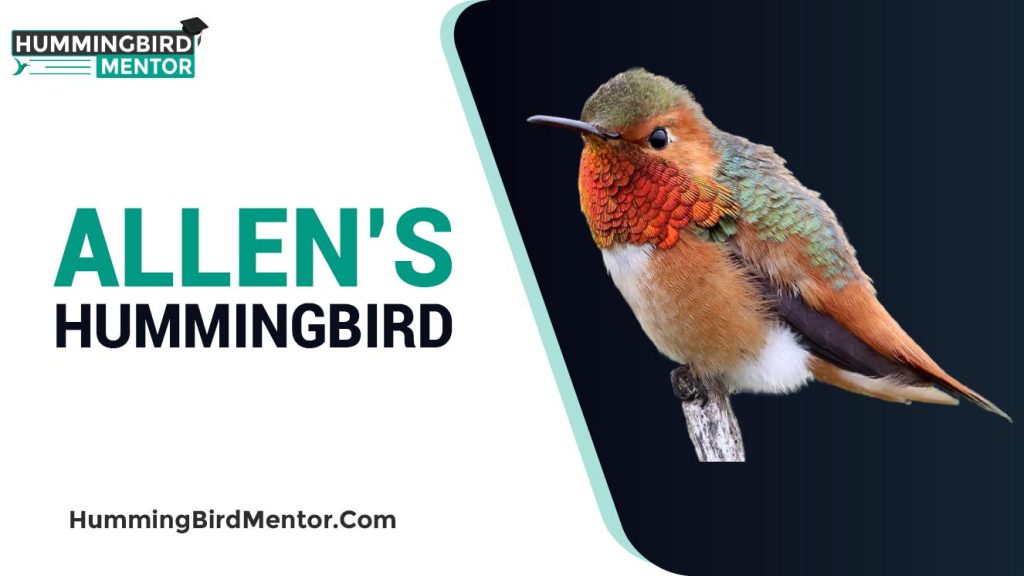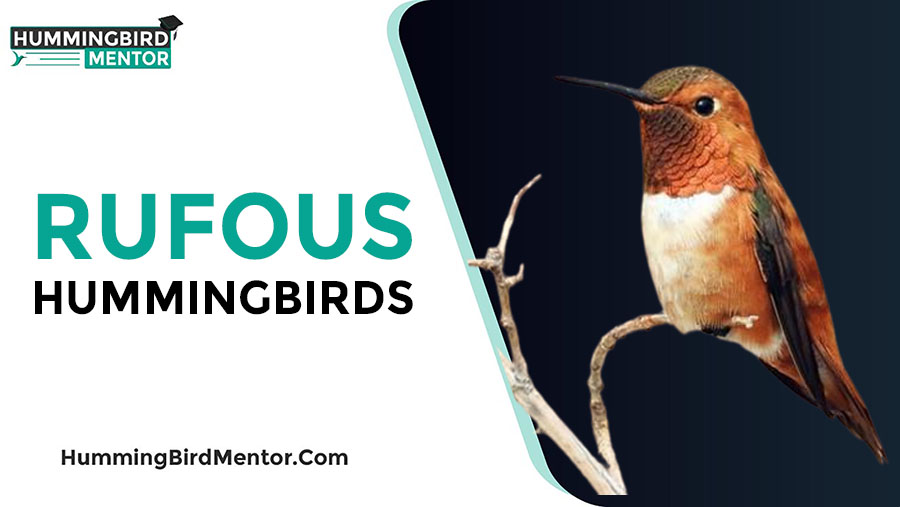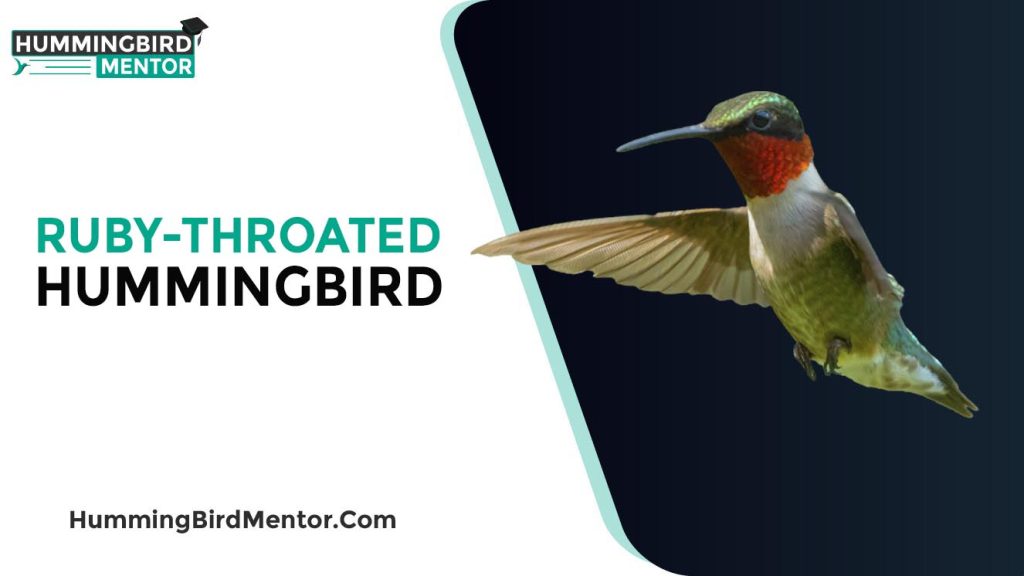Black-chinned hummingbird is a small species of the hummingbird, which is known for its smaller head, thinner neck, and more slender body as compared to the other hummingbird species in Washington. They don’t have many bright colors as compared to other hummingbird species and are only visible when the light hits them right. They are widely spread over the different parts of America, including the deserts, mountains, and forests. These hummingbirds are also known for crossing with Anna’s, Lucifer, Broad-tailed, and Costa’s hummingbirds.
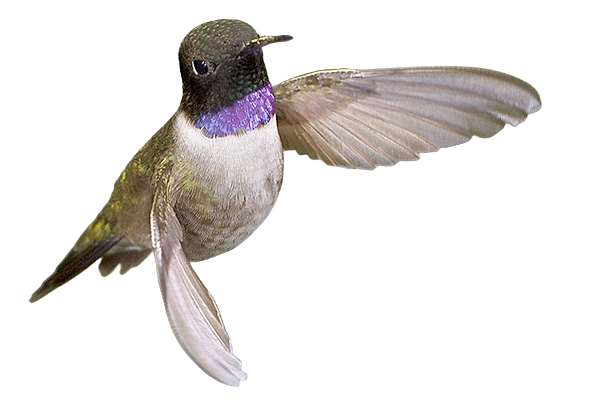
They have a very long, straight, and slender bill. Black-chinned hummingbirds are similar to the Broad-tailed hummingbirds, Anna’s hummingbirds, Lucifer Hummingbirds, Calliope hummingbirds, Rufous hummingbirds, and Coast’s hummingbirds. It’s one of the least concerned species of the hummingbirds as still most of the Black-chinned hummingbirds live in the wild. Black-chinned hummingbirds are also known for diving displays and different tones while they pass through the air. Let’s know more about the Black-chinned hummingbirds.
Scientific Name
The scientific name of the Black-chinned hummingbird is Archilochus Alexandri.
Image Gallery
Songs and Calls
Black-chinned hummingbirds can create 5 different chips and tricks depending upon the environment. These sounds include pure bell-like tones. Play this audio track to listen to their songs and calls. By listening to their actual voice, You will feel and understand them properly.
Conservation
From 1966 to 2014, the Black-chinned hummingbird population increased with time. However, relatively they show a stable population from 2009 to 2019. The hummingbird feeders and flowers play an important role in increasing their population.
Size and Shape
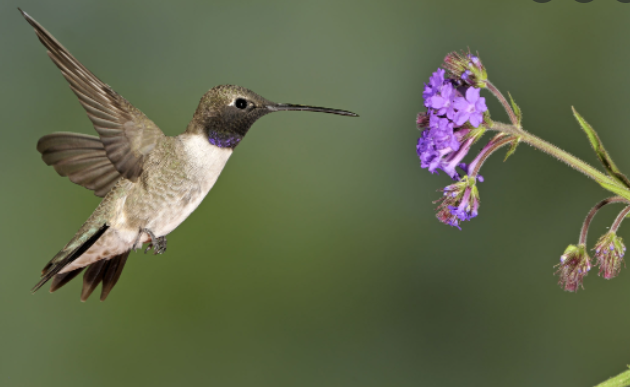
Black-chinned hummingbirds have a small size, the same size as the Ruby-throated. Both of their sexes can reach up to 3.5 inches in length with a weight of 0.1oz to 0.2oz. An adult hummingbird’s wingspan is approximately 4.3 inches. The young Black-chinned hummingbirds are born without feathers, but when they grow up, they get their complete feathers within the 3 weeks of hatching. You can distinguish the adult Black-chinned hummingbird with their forked tail.
Color Pattern
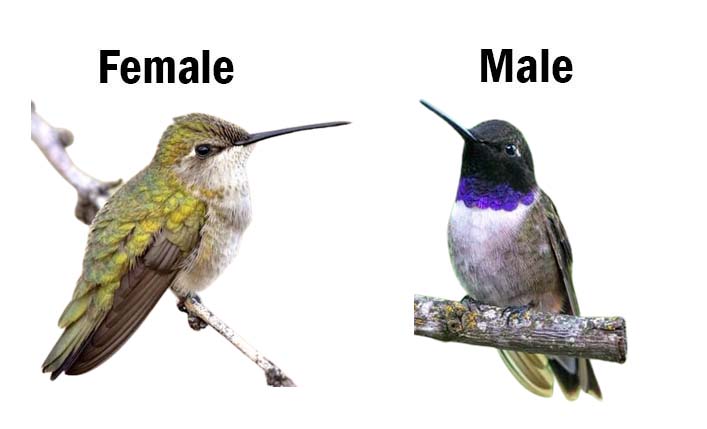
Male and females are slightly different from each other, especially due to their throats. The male Black-chinned hummingbirds have a black face and chin, purple throat band, and dark tail. The females usually have a dark rounded tail as compared to the forked tail of the female. Both have metallic green above, white below, and green flanks. Males also have black and purple feathers on their throats as compared to the white throat feathers of the female. The females also don’t have any throat patches like the males.
Behavior
The Black-chinned hummingbirds like to get the nectar from feeder’s ports and flowers with their long extendable beak. Both males and females have different habitats for their breeding territories. They show the territorial behavior around the feeders and flowers as well, especially during the breeding season. But if there are a large number of food sources, they are less territorial. They also like to catch insects to fulfill their protein needs. The male Black-chinned hummingbird display 66 to 100 feet dive while defending its territories.
Habitat
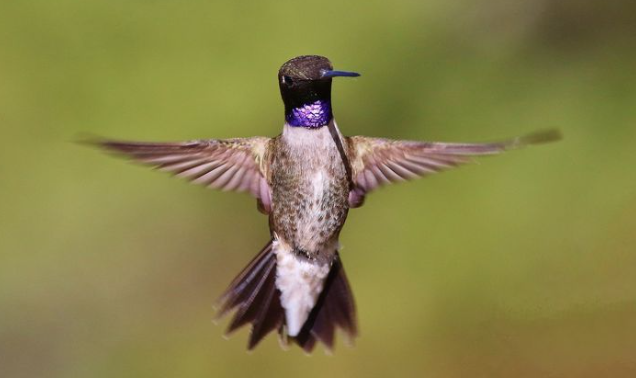
Black-chinned hummingbirds are adaptable to a variety of habitats, including the forests, deserts, and meadows. Most of the Black-chinned hummingbirds are found around the feeders or on the dead branches of the tall trees. You can also locate them in urban areas as long as tall trees, hummingbird feeders, and flowering shrubs are available. The shaded areas are their preferred places to perch. You can find them near cottonwood, sycamore, willow, salt cedar, and oak in the arid areas.
Food
Black-chinned hummingbirds like small insects and flower nectar. You can also provide them with the artificial nectar in hummingbird feeders. They often defend their territories, especially when the food sources are limited.
Nesting

Black-chinned hummingbirds prefer to make their nests between 6 to 12 feet above the ground. It’s easier to find the nests of Black-chinned hummingbirds than the other hummingbird species. They use cocoon fibers and spider silk to build compact and deep nests. But they make it wider and shallower with the time. They take care of the weather while constructing their nests as the nests of cooler areas has thicker wall as compared to the thinner wall of the warmer areas. The females usually lay down 2 white eggs, which go through an incubation period of 12 to 16 days.
Migration
Black-chinned hummingbirds are medium to long-distance migrants who usually move to higher mountain areas after their breeding season. Many individuals pass through the Southeastern United States while traveling to their wintering grounds in western Mexico. After passing the winter season, they return in spring.
Backyard Tips to attract Black-chinned hummingbirds
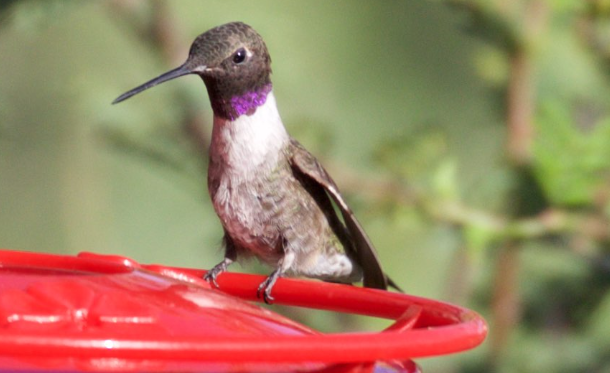
Black-chinned hummingbirds like to get the nectar from nectar feeders and natural nectar flowers. So, you can plant the nectar flowering plants or hang the artificial nectar feeders in your garden to attract the Black-chinned hummingbirds. You can make the nectar at home. Make sure to change it before it becomes moldy, as the moldy nectar is toxic to hummingbirds. Check the feeder regularly, especially during the hot summer days.
Cools facts about Black-chinned hummingbirds
Black-chinned hummingbird is one of those hummingbird species that have a versatile range. You can find them in different types of habitats, making them unique from the others. Let’s see some cool facts about Black-chinned hummingbirds.
- You can find the Black-chinned hummingbird’s nests every 100 meters in southern Arizona and southern New Mexico River.
- During their migration, they don’t stay more than one day at any feeder, even when the food sources are limited.
- They have a long beak with two grooves to get the nectar from feeder ports and natural flowers.
- They are very attracted to the red color, which is also the color of many natural nectar sources.
- Normally their heartbeats at 480 beats per minute. But to survive the cold nights, their heartbeat drops to 45 to 180 beats per minute during the torpor state.
- Their eggs are only the size of a coffee bean.
- They make their nest with a plant down and spider web, which is expandable with the baby’s growth.
- The oldest known Black-chinned hummingbird is 11 years and 2 months old, which was recaptured and released during the branding operation in Texas.
What are the favorite flowers of the Black-chinned hummingbirds?
Black-chinned hummingbirds like to get the nectar from a variety of bright flowers. Their favorite flowers include the small flowers of trees, herbs, shrubs, and epiphytes. So, you can plant the Tobacco tree, scarlet larkspur, and desert ocotillo to attract the Black-chinned hummingbirds in your garden.
What does the Black-chinned hummingbird look like?
The black-chinned hummingbirds have metallic green above and the dull grayish-white below. The male Black-chinned hummingbirds can be distinguished from the females due to their purple and black throats. Moreover, the females have three outer tail feathers that have white tips.
What is the lifespan of Black-chinned hummingbirds?
The Black-chinned hummingbirds can live up to 10 years depending upon different factors, which is more than the other birds of the same size.
Are Black-chinned hummingbirds found in Texas?
Yes, Black-chinned hummingbirds are mostly found in the western United States, including Texas. These hummingbirds breed in West Texas up to Canada. During the winter season, they are relatively common in Houston.
How do we distinguish Black-chinned hummingbirds from Anna’s Hummingbirds?
Black-chinned hummingbirds are similar to Anna’s hummingbirds. But you can distinguish them from Anna’s hummingbirds from their neck. The Black-chinned hummingbirds usually have a slightly thinner neck as compared to Anna’s hummingbirds. The Black-chinned hummingbirds have purple gorget as compared to the red gorget of the male Anna’s hummingbirds.
Conclusion
Black-chinned hummingbird is one of the least concerned species of hummingbirds. But you can find them in a variety of habitats as they are very adaptive to different kinds of environments. You can locate them in deserts, mountains, and suburban areas. The male Black-chinned hummingbirds are known for their black and purple throat markings. While the females have a white throat. If you locate them, you can hear their different sounds produced with different pitches depending upon the environment. Make sure to provide them with the nectar feeders, if you really want to see and help them.




